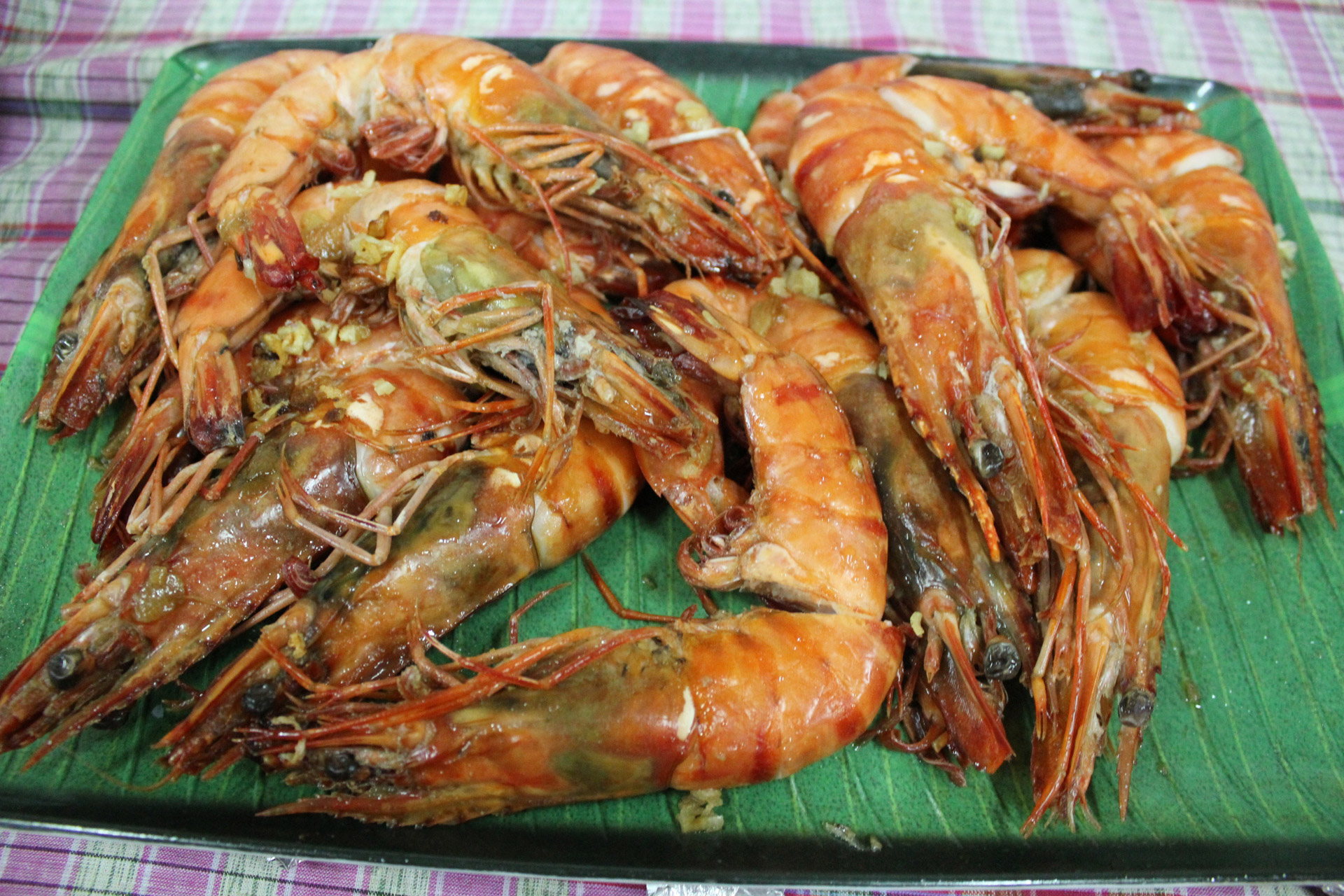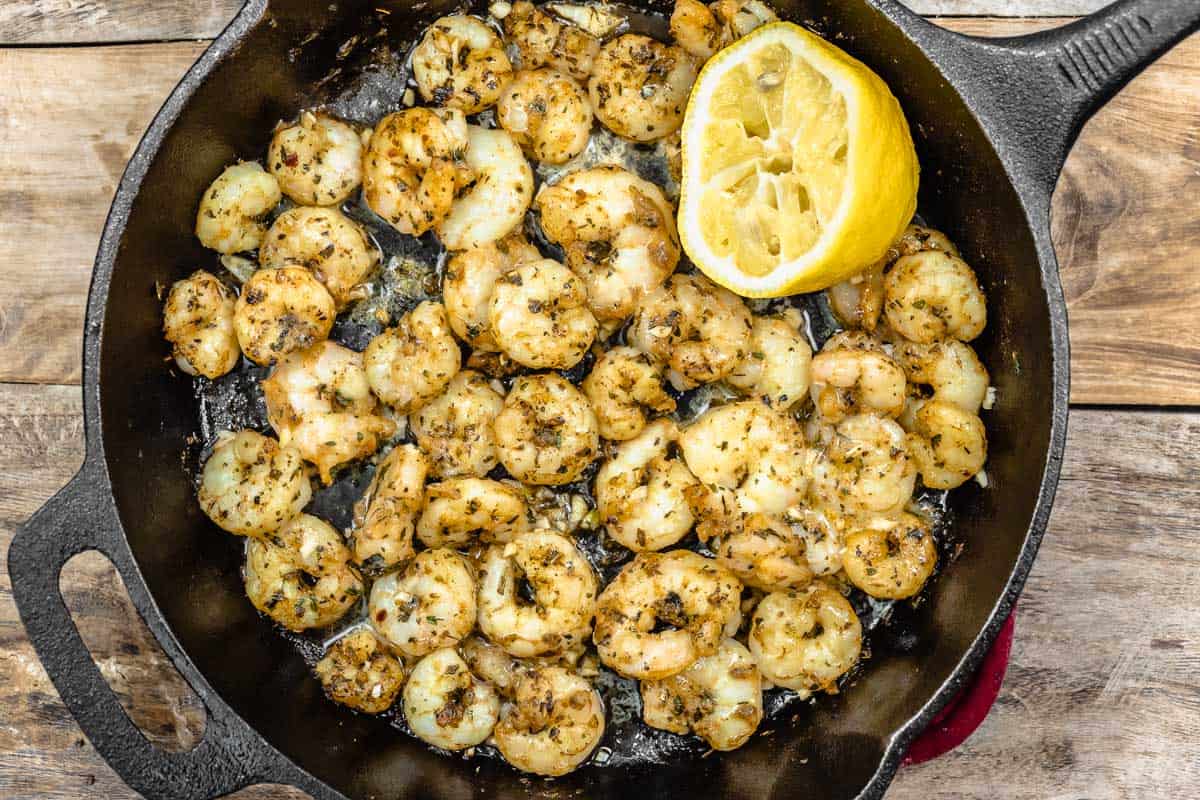In less than 5 minutes, you can make this quick and easy sautéed shrimp recipe. All you have to do is mix the shrimp with orange zest, salt, pepper, and Italian seasoning. Then add a splash of lemon juice and your favorite side dish. Dinner is ready!
Are you ready for the fastest dinner ever? Shrimp is a mainstay of the Mediterranean diet, and for good reason.
The Food and Drug Administration says that a 3-ounce serving of shrimp has a whopping 21 grams of protein. Shrimp cooks quickly and can be put in anything. Im here for it.
It only takes minutes to cook shrimp, and you can add your favorite herbs and spices to them to make almost any meal taste better. From soup to pasta, eggs, and more they go with almost anything.
If you’ve ever been afraid to cook this cheap and delicate protein, don’t be! This easy sautéed shrimp recipe is just as easy for beginners as my sheet pan shrimp recipe. I will teach you everything you need to know, such as how to choose, thaw, and cook shrimp every time. Simple yet delicious, they’re great to add to all of your favorite meals!.
Sautéed shrimp is a quick and easy way to put a delicious meal on the table in under 10 minutes. When shrimp are cooked properly, they become tender and juicy with a touch of crispy sear on the outside. Follow this simple guide to learn how to sauté shrimp like a pro in your own kitchen.
Prepping The Shrimp
You’ll want to start with raw, peeled shrimp Shrimp are sold by size or count-per-pound For sautéing, opt for medium to large shrimp labeled 26/30 or 16/20 count-per-pound. Rinse the shrimp and pat very dry with paper towels. The drier the shrimp, the better sear you’ll get when cooking.
Seasoning
Before sautéing, toss the shrimp with seasoning to infuse flavor. Good options include:
- Salt and pepper
- Cajun seasoning
- Old Bay seasoning
- Lemon pepper
- Italian herb blend
You can also add minced garlic, a squeeze of lemon juice, or a drizzle of olive oil during this step. The seasoning options are endless based on your taste preferences.
Heating The Skillet
Use a skillet with a thick bottom that will distribute heat evenly. Good options are stainless steel, cast iron, or aluminum non-stick Heat the pan over medium-high heat and add the fat.
Fat Options
The fat will prevent sticking and add flavor. Good options are
- Butter
- Olive oil
- Avocado oil
- Coconut oil
Melted butter will give the richest flavor. Olive oil is budget-friendly. Avocado oil has a high smoke point. Use about 1-2 tbsp of fat for 1 lb of shrimp.
Cooking The Shrimp
Once the pan and fat are hot, add the shrimp in a single layer without overcrowding. Resist stirring initially so the shrimp can sear.
-
Cook for 1-2 minutes per side.
-
Flip once the shrimp develop a light golden crust.
-
Cook until just opaque in center and cooked through.
Don’t Overcook
It’s easy to go from succulent to rubbery, so don’t overdo it. Some signs of overcooked shrimp:
-
Very firm and tough texture
-
Curled shape
-
Dry, flaky appearance
Take them off the heat while still slightly translucent in the middle. They’ll finish cooking from residual heat.
Seasoning While Cooking
You can add more flavor while sautéing:
-
Fresh minced garlic added halfway through cooking.
-
Squeeze of lemon juice added at the end.
-
Chopped fresh herbs like parsley tossed in right before serving.
-
A pat of butter swirled into the pan as you take it off the heat.
Serving Suggestions
Sautéed shrimp taste delicious on their own, or you can use them in a variety of dishes:
-
Scampi over pasta or rice.
-
Tacos with sautéed shrimp, pico de gallo, avocado.
-
Salad topper with lettuce, tomatoes, cheese.
-
Sandwich filler paired with tartar sauce.
-
Stir fry addition along with vegetables.
-
Filling for stuffed peppers or mushrooms.
-
Pizza topping.
With just a few minutes of active cooking, you can enjoy restaurant-quality shrimp from the comfort of your home. Proper seasoning, hot pan, touch of fat, and avoiding overcooking are the keys to perfect sautéed shrimp.

How to Cook Shrimp
As mentioned, shrimp takes literally minutes to cook. To know when they’re done, it’s important to keep a close eye on them and look for the following signs:
- When shrimp is done cooking, they will change color from clear and pale to pink and opaque.
- When shrimp is cooked right, it will be a little firm and have a little resistance when you bite into it.
- When the shrimp make a “C” shape, they are done. Undercooked shrimp have a straighter shape.
For more great tips about shrimp be sure to check out our Guide to Buying and Cooking Shrimp.
How to Devein and Shell Shrimp
I love the ease and convenience of ready-to-cook shrimp that have already been deveined and shelled. You might not always be able to find them, though, and shell-on shrimp can be a lot cheaper.
Trust me, taking the shrimp’s veins out and shelling them might sound hard, but it’s really not that hard! I’ll show you how:
- To remove the shrimp, start by finding the point where the head meets the body. Use a sharp knife to cut it off.
- Next, gently pull off the legs.
- Then, start at the shrimp’s head and work your way down to the tail to take off the shell. Once the head and legs are taken off, the shell should come off easily. You can even save the head, shell, and tail to make a tasty stock that you can use in soups, stews, and sauces with seafood.
- Once the shrimp are out of their shells, deveining them will be a breeze! Many people like to devein their shrimp because leaving the vein in can make the protein taste bitter or have a sandy texture.
- Cut along the outside of the shrimp with a paring knife or another small, sharp knife to get rid of it. Then, use the knife to cut out the vein. It should be thin and black, and you can easily see it. Throw it away.
- Once all the shrimp have been peeled and shelled, give them a good rinse under cold water. They’re now ready to use!

How to Make Sauteed Shrimp
How do you saute shrimp?
Here are the basic steps for how to saute shrimp (or jump to the recipe below): Toss the shrimp with seasonings in a bowl. See below for our secret seasoning blend, or you can simply use salt and pepper. Do this first so the shrimp are evenly coated in spices. Heat butter or olive oil in a skillet on medium high heat.
How do you cook a fried shrimp?
Keep an eye on it – garlic burns easily, and you can turn the heat down if necessary. While the garlic and spices sauté, pat the shrimp dry and season with salt and pepper. Add the shrimp and cook over medium-high heat until ALMOST completely cooked. Don’t worry about getting a good sear.
How do you cook Jumbo Shrimp?
1 – 1.5 lb. jumbo shrimp peeled and deveined, tail on or off depending on preference. Heat the oil (2 tablespoons) in a large skillet (I prefer nonstick for this recipe) over medium heat. Add the minced garlic (2 cloves/1 teaspoon), dried oregano (1 teaspoon), and crushed red pepper if using (1/2 teaspoon).
How long does it take to cook sauteed shrimp?
Seriously, this sauteed shrimp is juicy and tender, and it’s coated in an incredibly flavorful garlic herb butter sauce that you’ll want to drizzle over everything and anything. Plus, as I mentioned earlier, the best thing about this easy shrimp recipe is how fast it is to make. I mean, from start-to-finish it’s ready in less than 10 minutes!
